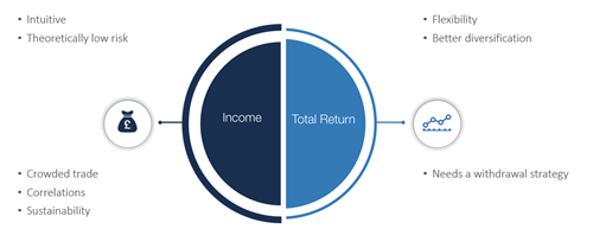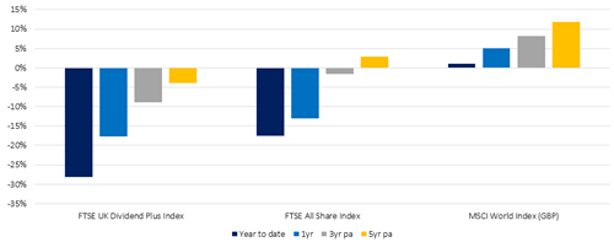Don’t Confuse Investing for Income with a Resilient Income Strategy

There is a difference between investing for income and deploying an income strategy that can give you both consistent returns and lets you benefit from gains across a wider investment spectrum.
It’s not unusual for people to think – particularly when assessing their retirement – that investing in income-producing assets makes sense. These could be dividend yields from stocks, bonds that pay a high yield, or other investments that give a high headline rate of interest.
This approach can intuitively feel like the right thing to do. You may apportion a figure for how much you need to spend and live off, and this sum is going to be neatly covered by a natural income you get from an investment. Theoretically, it seems like a low risk and easy route to take: maintain your capital value and just live off the income.
But it’s worth examining your options, as you may be missing out on other opportunities, subjecting yourself to more risk than you appreciate, and paying more tax than you should.
The attributes of income and total return approaches
The downside of investing solely in income-producing investments is that these kinds of assets can be correlated in the types of investments they are.
For example, companies that pay a high level of dividend tend to be concentrated in similar sectors and some sectors with vast potential vary rarely pay dividends. Therefore, you can miss out on significant growth sectors (such as technology), an approach which sometimes may be of benefit but generally you are lowering your level of diversification.
Consider, too, that if your income investments are outside of a pension or ISA, you are also increasing your tax rate because you pay more tax on income than capital gains.
At a glance – income vs total return approaches
![]()

So while intuitively, income investing seems like a good thing to do, a total return strategy can be more effective even if producing and then withdrawing an income is your main objective.
A total return approach is like it sounds – it aims to give investors a return from all sources: interest, dividends and capital growth. This balanced approach means we do have some income producing assets in our portfolios, but we also have growth related investments as well – to give you more diversification, more flexibility and outside of a pension, a better tax regime, too.
You are likely to need a withdrawal strategy with this approach, as you may need to sell assets at times to fund your withdrawals and some of your returns may be subject to capital gains tax. However, the smarter technology that our clients can use lets you design a personally tailored cashflow strategy with ease, funded from different portfolio components.
This provides the opportunity to match payment requirements precisely, driven from a portfolio's total return rather than relying on a narrow set of income-based assets. We believe that combining a more balanced portfolio targeting total returns, with tailored cashflows, is a better approach for those who are seeking income.
An emphasis on the total return from a portfolio means it isn't restricted to chasing potentially expensive income assets – the manager can be agnostic as to whether returns come from dividends, interest or capital appreciation, allowing for more drivers of portfolio performance.
And the numbers stack up, too
How a dividend index compares to wider indices
The figures in the chart below show how different indices performed to the end of June 2020, over four timeframes: the year to date, 1 year, 3 years and 5 years.
With so many UK companies cutting dividends in 2020 it is not surprising that the FTSE UK Dividend Plus Index hasn’t performed well this year – down nearly 30% compared to the MSCI World Index – but a meaningful shortfall is also evident up to the five year timeframe.
Domestic and international market returns
![]()

Source: Morningstar, Bloomberg and Netwealth. Returns shown to 30th June 2020.
These figures refer to the past, and past performance is not a reliable indicator of future returns.
While this example merely compares indices, it illustrates how focusing on high dividends alone – even though this may be reassuring when you receive them on a monthly basis – can actually lead to worse outcomes in the long run because you miss out on so much capital growth. Being globally diversified through a total return approach can ensure you capture the gains from fast-growing companies around the world.
Income is essential for many investors, but choosing an efficient way to receive it should be an equally important consideration. Talk to us about how we can help you to cost effectively manage your income needs.
Please note, the value of your investments can go down as well as up.